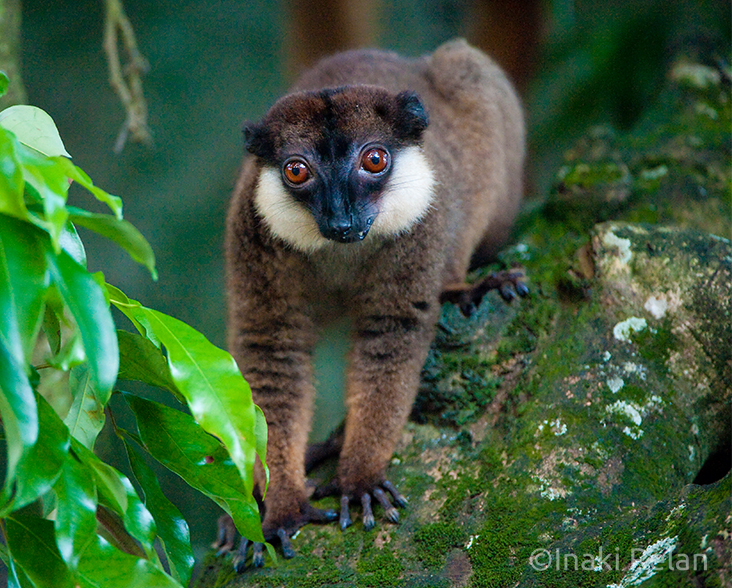White-collared Lemur
Species Data
Class: Mammalia
Order: Primates
Family: Lemuridae
Scientific Name: Eulemur cinereiceps
IUCN Red List status: Critically Endangered
DESCRIPTION
The White-collared Lemur is a medium-sized lemur, best identified by a white collar present around the cheeks of males. Female White-collared Lemurs look incredibly similar to the closely related Collared Brown Lemur (Eulemur collaris), and are easily misidentified. This is because they lack the characteristic white collar seen in the males. This species also has a dark grey tail and brown fur around the torso, which is darker in male individuals. Due to its taxonomic history, this species is also referred to as the Grey-headed lemur.
BEHAVIOUR
White-collared Lemurs are a primarily tree-dwelling species. Active periodically both day and night, these lemurs mainly eat fruit, although their diet is also supplemented with flowers, leaves, and insects. They are found mostly in the upper layers and edges of the forest, and live in troops of up to around 20, although individuals may leave and re-join the group sporadically.


HABITAT
Like most lemurs, the White-collared Lemur lives exclusively in the forests of Madagascar. This species in particular is only found in a few small areas in the humid south-eastern regions of the island, at elevations of up to 900 metres above sea level. It has been estimated that only 700 km2 of suitable habitat remains within the species’ range.
THREATS AND CONSERVATION
Like many lemur species, deforestation as a result of clearing for agriculture has significantly impacted the White-collared Lemur’s available habitat. With such small areas of habitat remaining, any forest loss poses a huge threat to this lemur’s survival, and additional pressures of logging and hunting have subsequently led to it being classified as Critically Endangered.
Climate change has also seriously threatened the species’ survival, with one cyclone event believed to have wiped out around 50% of the population living along the coastal edge of the species’ range. Such damaging weather events are becoming more frequent, and White-collared Lemurs are at particular risk due to already having lost most of their natural habitat.
